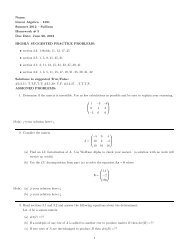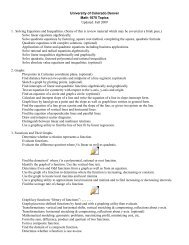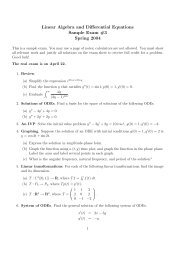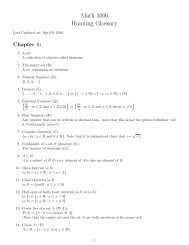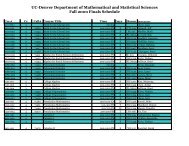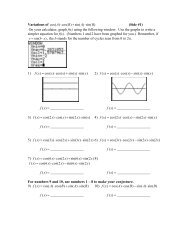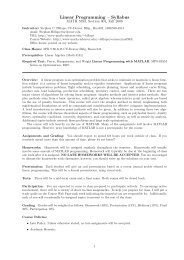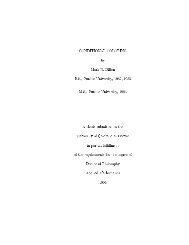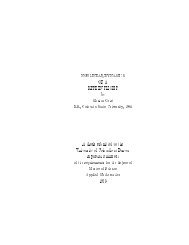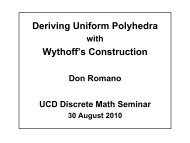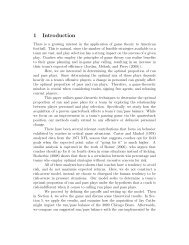Fourier, Jean Baptiste Joseph - Mathematical & Statistical Sciences
Fourier, Jean Baptiste Joseph - Mathematical & Statistical Sciences
Fourier, Jean Baptiste Joseph - Mathematical & Statistical Sciences
Create successful ePaper yourself
Turn your PDF publications into a flip-book with our unique Google optimized e-Paper software.
Shaun Rezaiefard<br />
MATH 4010<br />
Laplace, Lagrange, and Legendre were the referees. While admitting the novelty<br />
and importance of <strong>Fourier</strong>’s work they pointed out that the mathematical treatment was<br />
faulty. <strong>Fourier</strong> analysis is the decomposition of a function in the terms of a sum of<br />
sinusoidal functions of different frequencies that can be recombined to obtain the original<br />
function. 14 The <strong>Fourier</strong> series is a type of <strong>Fourier</strong> analysis, which decomposes a periodic<br />
function into a sum of simple functions that may contain sines, cosines or complex<br />
exponentials 4 .<br />
Imagine we have a block of metal and the surface is maintained at a fixed<br />
temperature. Then under physical considerations the interior temperature distributions at<br />
initial time, t=0, is all you need to find the interior distributions at all future times. 7 Even<br />
if the initial temperature distribution changes <strong>Fourier</strong> asserted that “nevertheless it is<br />
equal to the sum of a series of sines and cosines” 4 . Here <strong>Fourier</strong> was repeating Bernoulli<br />
except for the fact that Bernoulli was only speaking of functions that are formed by a<br />
single expression and <strong>Fourier</strong> included those functions given piecewise by several<br />
different formulas 3 . <strong>Fourier</strong> was asserting that the distinction of function and graph was<br />
nonexistent. Since every function represents a graph, then every graph represents a<br />
function, called its <strong>Fourier</strong> series 2 . Lagrange, one of the creators of variational calculus,<br />
and many other great mathematicians found <strong>Fourier</strong>’s claim very hard to believe 1 .<br />
<strong>Fourier</strong>’s most important step was finding the formula of the coefficients in the<br />
expansion. Without knowing that Euler and Bernoulli had calculated this previously<br />
<strong>Fourier</strong> calculated it all over again. All three of the mathematicians looked past the direct<br />
method of orthogonality, which could have solved the problem in just one line of work 4 .






